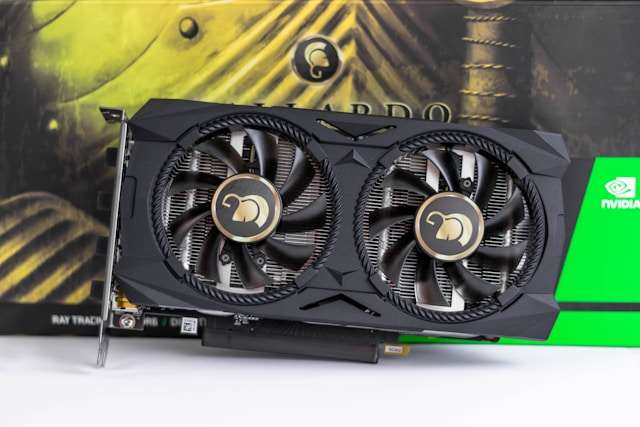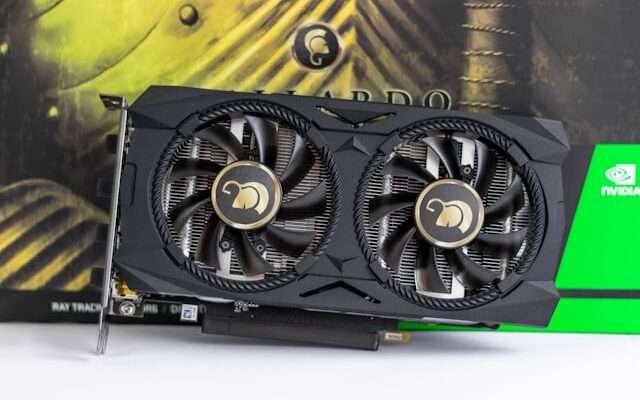Explore the factors influencing NVIDIA stock price prediction. Learn about market trends, financial performance, and expert forecasts to make informed investment decisions
Introduction
NVIDIA Corporation, known for its cutting-edge graphics processing units (GPUs) and AI technologies, has been a significant player in the tech industry. As a result, predicting NVIDIA’s stock price is a topic of great interest to investors. This article delves into various aspects influencing NVIDIA’s stock price, providing a comprehensive analysis to help you make informed decisions.
Overview of NVIDIA Corporation
History and Background
NVIDIA Corporation, founded in 1993 by Jensen Huang, Chris Malachowsky, and Curtis Priem, has become a leader in the graphics processing unit (GPU) market. The company is headquartered in Santa Clara, California, and has revolutionized computing with its GPU technology.
Key Products and Services
NVIDIA’s product portfolio includes GPUs for gaming and professional markets, system-on-a-chip units (SoCs) for mobile computing and automotive markets, and a suite of software for gaming, professional visualization, data centers, and automotive applications.
Market Position
NVIDIA holds a dominant position in the GPU market, consistently innovating and expanding its product offerings to cater to various industries, including gaming, AI, data centers, and automotive.
Current Market Performance
Recent Stock Performance
NVIDIA’s stock has experienced significant growth over the past few years, driven by robust demand for its GPUs and advancements in AI technology. The stock price has shown volatility but has generally trended upwards, reflecting strong investor confidence.
Market Capitalization
As of the latest data, NVIDIA’s market capitalization stands at over $500 billion, making it one of the most valuable semiconductor companies globally. This valuation reflects its market dominance and growth potential.
Trading Volume
NVIDIA’s stock sees high trading volumes, indicating strong interest from both institutional and retail investors. The liquidity of the stock ensures that investors can enter and exit positions without significant price impact.

Financial Health of NVIDIA
Revenue Growth
NVIDIA has demonstrated impressive revenue growth, driven by its diverse product offerings and expanding market reach. The company reported revenues exceeding $26 billion in the last fiscal year, marking a substantial year-over-year increase.
Profit Margins
NVIDIA maintains healthy profit margins, thanks to its premium pricing strategy and efficient cost management. The company’s gross margin consistently exceeds 60%, highlighting its strong profitability.
Balance Sheet Strength
NVIDIA’s balance sheet is robust, with substantial cash reserves and manageable debt levels. This financial stability allows the company to invest in R&D, strategic acquisitions, and other growth initiatives without financial strain.
Key Drivers of NVIDIA’s Stock Price
Innovation and Product Development
NVIDIA’s commitment to innovation drives its stock price. The company invests heavily in R&D, resulting in cutting-edge products that meet the evolving needs of various markets. Recent innovations, such as the RTX 30 series GPUs, have been well-received.
Market Demand
The demand for high-performance GPUs in gaming, AI, and data centers significantly impacts NVIDIA’s stock price. The company’s ability to meet and stimulate market demand through its product offerings is a key determinant of its financial performance.
Competitive Landscape
NVIDIA operates in a highly competitive market, with major players like AMD and Intel posing significant challenges. The company’s competitive strategies, including product differentiation and strategic partnerships, help it maintain its market position.
Impact of AI and Machine Learning
AI Market Growth
The AI market is rapidly expanding, with applications across various industries. NVIDIA’s GPUs are integral to AI and machine learning tasks, making the company a key player in this growing market.
NVIDIA’s Role in AI
NVIDIA’s GPUs are widely used in AI applications, from data centers to autonomous vehicles. The company’s CUDA platform and software libraries have become standard tools for AI researchers and developers.
Future Prospects
NVIDIA’s continued investment in AI technology positions it well for future growth. The company’s innovations in AI hardware and software are expected to drive demand and revenue in the coming years.
Gaming Industry Influence
GPU Demand in Gaming
The gaming industry is a major driver of NVIDIA’s revenue. High-performance GPUs are essential for modern gaming experiences, and NVIDIA’s products are popular among gamers worldwide.
Market Share
NVIDIA holds a significant market share in the gaming GPU segment, thanks to its advanced technology and strong brand reputation. The company’s GeForce series is a top choice for gamers seeking high performance.
Revenue from Gaming Segment
The gaming segment contributes a substantial portion of NVIDIA’s revenue. The company’s ability to innovate and capture market share in this segment is crucial to its financial success.
Data Center Market Contribution
Growth of Data Centers
The data center market is experiencing rapid growth, driven by the increasing demand for cloud services and AI applications. NVIDIA’s GPUs are essential components in data center infrastructure, providing high-performance computing capabilities.
NVIDIA’s Market Share
NVIDIA is a leading supplier of GPUs for data centers, competing with companies like AMD and Intel. The company’s GPUs are preferred for their performance and energy efficiency.
Financial Impact
The data center segment is a significant revenue driver for NVIDIA. As demand for AI and cloud services grows, the company’s revenue from this segment is expected to increase.
Automotive Sector Opportunities
Autonomous Vehicles
NVIDIA is at the forefront of the autonomous vehicle market, providing AI and GPU technology for self-driving cars. The company’s DRIVE platform is widely used by automakers and technology companies developing autonomous vehicles.
Partnerships and Collaborations
NVIDIA has formed strategic partnerships with leading automotive companies to advance autonomous vehicle technology. These collaborations enhance the company’s market position and growth prospects.
Revenue Potential
The automotive sector presents a significant revenue opportunity for NVIDIA. As autonomous vehicles become more prevalent, demand for NVIDIA’s technology is expected to rise.
Impact of Cryptocurrency Mining
GPU Demand for Mining
Cryptocurrency mining drives demand for high-performance GPUs. NVIDIA’s GPUs are popular among miners due to their efficiency and processing power.
Market Volatility
The cryptocurrency market is highly volatile, impacting GPU demand and prices. NVIDIA’s stock price can be influenced by fluctuations in the cryptocurrency market.
Financial Implications
While cryptocurrency mining contributes to NVIDIA’s revenue, the market’s volatility presents both opportunities and risks for the company. Managing this volatility is crucial for financial stability.
Global Economic Factors
Trade Policies
Trade policies and tariffs can impact NVIDIA’s operations and profitability. The company’s global supply chain is sensitive to changes in trade regulations and international relations.
Economic Growth
Global economic growth affects consumer spending and demand for NVIDIA’s products. Economic downturns can reduce demand, while growth periods can boost sales.
Currency Fluctuations
Currency fluctuations impact NVIDIA’s international revenue and costs. The company’s financial performance can be influenced by changes in exchange rates.
Technological Advancements
Emerging Technologies
NVIDIA is at the forefront of several emerging technologies, including AI, machine learning, and autonomous vehicles. The company’s ability to innovate and adapt to technological changes is crucial for long-term success.
R&D Investments
NVIDIA invests heavily in research and development to maintain its technological edge. These investments result in new products and technologies that drive revenue growth.
Innovation Pipeline
NVIDIA’s innovation pipeline includes advancements in GPU technology, AI, and other emerging fields. The company’s focus on innovation ensures it remains competitive and relevant.
NVIDIA’s Competitive Landscape
Major Competitors
NVIDIA faces competition from companies like AMD, Intel, and Qualcomm. Each competitor has its strengths and strategies, impacting NVIDIA’s market share and pricing power.
Market Share Analysis
NVIDIA’s market share in various segments, such as gaming GPUs and data centers, reflects its competitive position. The company’s ability to maintain and grow its market share is essential for financial performance.
Competitive Strategies
NVIDIA employs several competitive strategies, including product differentiation, strategic partnerships, and technological innovation. These strategies help the company stay ahead of its rivals.
Regulatory Environment
Government Regulations
NVIDIA operates in a highly regulated industry, with government policies affecting its operations. Compliance with regulations is crucial to avoid legal and financial repercussions.
Compliance Issues
NVIDIA must adhere to various regulations, including environmental, labor, and trade laws. Ensuring compliance is essential for maintaining its reputation and avoiding penalties.
Impact on Operations
Regulatory changes can impact NVIDIA’s operations and financial performance. The company must stay informed about regulatory developments and adapt accordingly.
SWOT Analysis of NVIDIA
Strengths
NVIDIA’s strengths include its strong brand reputation, technological leadership, and robust financial performance. The company’s innovation and market presence are key strengths.
Weaknesses
NVIDIA’s weaknesses include reliance on specific market segments and exposure to market volatility. Managing these weaknesses is crucial for sustained growth.
Opportunities
NVIDIA has significant growth opportunities in AI, data centers, and autonomous vehicles. Capitalizing on these opportunities is essential for long-term success.
Threats
Threats to NVIDIA include intense competition, regulatory challenges, and market volatility. The company must navigate these threats to maintain its market position.
Analyst Ratings and Predictions
Expert Opinions
Financial analysts provide valuable insights into NVIDIA’s stock performance. Most analysts have a positive outlook on the stock, citing strong growth prospects and robust financial health.
Stock Ratings
NVIDIA’s stock is generally rated as a “buy” by analysts, reflecting confidence in its growth potential. The stock’s ratings are influenced by various factors, including financial performance and market trends.
Future Price Predictions
Analysts predict that NVIDIA’s stock price will continue to rise, driven by strong demand for its products and innovative technologies. However, market conditions and external factors can impact these predictions.
Investor Sentiment
Market Perception
Investor sentiment towards NVIDIA is generally positive, reflecting confidence in the company’s growth prospects. Market perception is influenced by financial performance, product launches, and industry trends.
Social Media Impact
Social media platforms play a role in shaping investor sentiment. Positive news and product announcements can boost investor confidence, while negative news can have the opposite effect.
Investor Confidence
Strong financial performance and market leadership contribute to investor confidence in NVIDIA. Maintaining this confidence is crucial for attracting and retaining investors.
Risks and Challenges
Market Risks
NVIDIA faces market risks, including competition, economic downturns, and changing consumer preferences. Managing these risks is essential for financial stability.
Operational Risks
Operational risks include supply chain disruptions, production delays, and technological failures. The company must have strategies in place to mitigate these risks.
Financial Risks
Financial risks include currency fluctuations, interest rate changes, and investment losses. Effective financial management is crucial for minimizing these risks.
Long-term Growth Prospects
Strategic Initiatives
NVIDIA’s strategic initiatives include expanding its product portfolio, entering new markets, and enhancing its technological capabilities. These initiatives are key to long-term growth.
Expansion Plans
NVIDIA plans to expand its presence in emerging markets and industries, such as AI and autonomous vehicles. These expansion plans are expected to drive revenue growth.
Future Outlook
The future outlook for NVIDIA is positive, with significant growth opportunities in various sectors. The company’s innovation and market leadership position it well for continued success.
NVIDIA’s Dividend Policy
Dividend History
NVIDIA has a history of paying dividends to its shareholders. The company’s dividend policy reflects its commitment to returning value to investors.
Payout Ratio
NVIDIA’s payout ratio, which indicates the percentage of earnings paid as dividends, is considered sustainable. The company balances dividend payments with reinvestment in growth initiatives.
Future Expectations
NVIDIA is expected to continue paying dividends, supported by strong financial performance. The company’s dividend policy is likely to evolve in line with its growth prospects.
Impact of Mergers and Acquisitions
Recent M&As
NVIDIA has engaged in several mergers and acquisitions to enhance its technological capabilities and market reach. These M&As contribute to the company’s growth strategy.
Strategic Fit
Mergers and acquisitions are evaluated based on their strategic fit with NVIDIA’s business objectives. Successful integrations enhance the company’s market position and financial performance.
Financial Impact
M&As have a significant financial impact, influencing revenue growth, cost structures, and market share. NVIDIA’s ability to integrate acquisitions effectively is crucial for realizing their benefits.
Technological Collaborations
Partnerships
NVIDIA forms partnerships with other technology companies to drive innovation and market expansion. These partnerships enhance the company’s technological capabilities and market reach.
Joint Ventures
Joint ventures with industry leaders enable NVIDIA to explore new markets and technologies. These collaborations are essential for staying competitive in a rapidly evolving industry.
Innovation Synergy
Collaborations create innovation synergy, combining the strengths of multiple companies to develop cutting-edge technologies. NVIDIA’s partnerships are crucial for maintaining its innovation leadership.
Stock Valuation Techniques
P/E Ratio
The price-to-earnings (P/E) ratio is a common valuation metric for NVIDIA’s stock. It compares the stock price to the company’s earnings, providing insights into its valuation.
DCF Analysis
Discounted cash flow (DCF) analysis estimates the present value of NVIDIA’s future cash flows. This technique helps investors determine the intrinsic value of the stock.
Comparable Company Analysis
Comparable company analysis involves comparing NVIDIA’s financial metrics with those of similar companies. This technique provides a relative valuation of the stock.
Investor FAQs
What factors influence NVIDIA’s stock price? NVIDIA’s stock price is influenced by financial performance, market demand, competitive landscape, and global economic factors.
How does NVIDIA’s AI technology impact its stock price? NVIDIA’s advancements in AI technology drive demand for its products, positively impacting its stock price. The company’s role in AI enhances its growth prospects.
What are the risks of investing in NVIDIA? Risks include market volatility, competition, regulatory challenges, and operational risks. Investors should consider these factors when evaluating NVIDIA’s stock.
How does the gaming industry affect NVIDIA’s financial performance? The gaming industry is a significant revenue driver for NVIDIA. Demand for high-performance GPUs in gaming positively impacts the company’s financial performance.
What is NVIDIA’s strategy for long-term growth? NVIDIA’s long-term growth strategy includes innovation, market expansion, strategic partnerships, and mergers and acquisitions. The company focuses on emerging technologies and markets.
How do cryptocurrency market fluctuations affect NVIDIA? Cryptocurrency market fluctuations impact GPU demand and prices, influencing NVIDIA’s revenue. The company faces opportunities and risks from the volatile cryptocurrency market.
Conclusion
NVIDIA’s stock price prediction involves analyzing various factors, including financial performance, market demand, competitive landscape, and global economic conditions. The company’s strong market position, innovative technology, and growth prospects make it a compelling investment opportunity. By understanding the key drivers and risks, investors can make informed decisions about NVIDIA’s stock.




